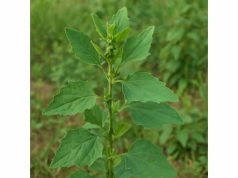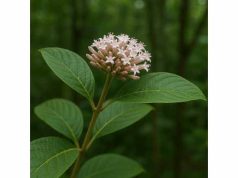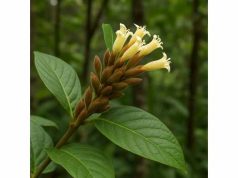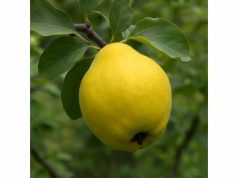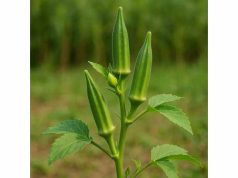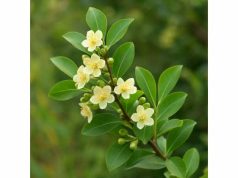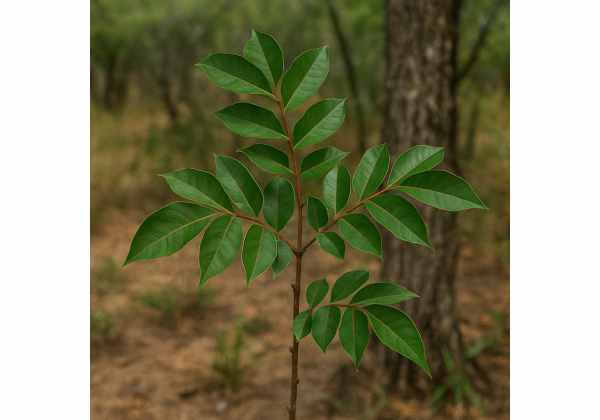
Quebracho is a remarkable herb celebrated for its potent health benefits, diverse active compounds, and broad medicinal properties. Recognized for its rich tannins and unique phytochemicals, this natural remedy offers anti-inflammatory, antioxidant, and astringent effects while supporting immune function and circulation. Traditionally used in South American healing practices, Quebracho has gained popularity for its versatility in addressing minor ailments and promoting overall wellness. Its multifaceted applications include uses in medicine, cosmetic formulations, and even culinary experiments, making it an invaluable asset in natural health regimes.
Table of Contents
- Plant Characteristics and Taxonomic Insight
- Phytochemical Composition and Active Constituents
- Health Advantages and Core Medicinal Qualities
- Practical Applications and Safety Considerations
- Scientific Discoveries and Research Highlights
- Frequently Asked Questions
Plant Characteristics and Taxonomic Insight
Quebracho, derived from the Spanish term meaning “broken wood,” is more than just a name—it encapsulates the herb’s distinctive physical properties and robust resilience. Botanically categorized under the Fabaceae family, Quebracho trees are primarily native to the subtropical and temperate regions of South America, particularly thriving in the Gran Chaco and adjacent areas. This genus, including species such as Schinopsis balansae and Schinopsis lorentzii, exhibits striking characteristics: a dense, hard wood, compound leaves with a leathery texture, and small, inconspicuous flowers that eventually give way to pea-like seed pods.
The bark is notably rich in tannins, contributing to its astringent quality and its historical use in leather tanning. The tree’s ability to withstand harsh environmental conditions such as seasonal drought and poor, rocky soils has made it a subject of ecological interest. Its root system is deep and robust, aiding in soil stabilization and nutrient absorption. The leaves, often exhibiting a muted green hue, are arranged alternately along sturdy branches, and their resilience against pests and pathogens underscores the plant’s natural defense mechanisms.
In its natural habitat, Quebracho plays a vital role in the ecosystem. The species has adapted to extreme temperature variations and exhibits a remarkable resistance to both wind and fire, making it a cornerstone in reforestation and soil conservation efforts. Ecologists appreciate Quebracho not only for its economic uses but also for its contribution to biodiversity, as it supports a wide array of wildlife and plant species within its native range. Its cultural and environmental significance continues to drive research into its sustainable management and further potential in natural medicine.
Cultivated both in its native regions and in similar climates globally, Quebracho presents a model of survival and natural efficiency. It thrives in areas characterized by full sun exposure and well-drained soils, where its growth patterns facilitate a strong structural build—a characteristic that has historically led to its use in construction, furniture making, and traditional medicine. Its versatility in both natural and artificial environments reinforces its status as a plant of immense ecological and economic value.
Additionally, its propagation through seed dispersal and coppicing ensures sustained availability in forest ecosystems, reaffirming its legacy as a plant of enduring strength and utility. As research continues, the botanical features of Quebracho inspire both conservation efforts and innovative applications in herbal medicine.
Phytochemical Composition and Active Constituents
One of the defining attributes of Quebracho lies in its rich and diverse chemical composition. The herb is abundant in natural compounds that not only contribute to its potent flavor and aroma but also underpin its various health benefits. Detailed analysis of its phytochemistry reveals a plethora of bioactive substances that act synergistically to provide antioxidant, anti-inflammatory, and antimicrobial effects. Below is a numbered overview of the key active constituents inherent in Quebracho:
- Tannins: Representing the cornerstone of Quebracho’s properties, tannins are polyphenolic compounds known for their astringent quality. They play a central role in wound healing, reducing inflammation, and protecting against oxidative stress. These compounds are also widely recognized for their contribution to cardiovascular health by regulating blood pressure and reducing cholesterol levels.
- Flavonoids: This group of antioxidants is integral in mitigating free radical damage and offers protection against cellular degeneration. In Quebracho, flavonoids such as quercetin and kaempferol provide anti-inflammatory benefits and bolster the immune response, which is essential for maintaining overall health and vitality.
- Saponins: Known for their surface-active properties, saponins contribute to the herb’s antimicrobial action. They aid in reducing cholesterol levels, boosting immune function, and possess natural anti-inflammatory qualities, making them beneficial in managing and preventing a variety of health conditions.
- Alkaloids: Although present in smaller quantities, alkaloids in Quebracho have been associated with significant therapeutic effects. These compounds exhibit potential analgesic and anti-inflammatory properties, contributing to pain management and overall wellbeing.
- Phenolic Compounds: Beyond tannins, additional phenolic compounds in Quebracho impart robust antioxidant capabilities, helping to neutralize free radicals. They also assist in modulating inflammatory pathways, thereby reducing chronic inflammation and supporting metabolic health.
- Terpenoids: These organic chemicals provide subtle aromatic qualities and serve as precursors to various medicinal agents. Their anti-microbial and anti-cancer properties are gradually being recognized, adding another layer of complexity and potential to Quebracho’s comprehensive phytochemical profile.
Each of these compounds contributes uniquely to the health-enhancing aspects of Quebracho. The synergistic action between tannins, flavonoids, and other constituents not only fortifies its antioxidant capacity but also makes the herb a promising candidate in the formulation of natural therapeutic agents. Continuous research is delving into the specific mechanisms of these molecules, with many studies affirming their roles in disease prevention and health promotion.
Innovative extraction techniques have been developed to isolate these compounds, ensuring that the highest quality extracts are available for both medicinal and industrial applications. The concentrated extracts of Quebracho are increasingly being used in dietary supplements, cosmetic products, and herbal teas. This integration into modern natural therapies highlights the herb’s multifaceted potential and its importance as a natural resource.
Moreover, advancements in analytical chemistry and biochemistry have allowed researchers to better understand the individual contributions of these active agents. Emerging evidence from preclinical trials suggests that Quebracho’s phytochemicals may offer protective benefits to various organ systems, including the cardiovascular, hepatic, and nervous systems. This growing body of evidence solidifies the herb’s status as a key natural compound in holistic health practices.
The promising results from phytochemical studies have spurred a surge in interest regarding optimized extraction methods, aiming to achieve both efficacy and sustainability. As these methods evolve, the bioactive compounds of Quebracho will continue to be a focal point for nutritional science and pharmaceutical research, inspiring new therapeutic formulations and natural health products.
Health Advantages and Core Medicinal Qualities
Quebracho offers an impressive spectrum of health advantages that have been acknowledged both in traditional folk medicine and by contemporary scientific research. Its robust anti-inflammatory and antioxidant activities underpin its ability to combat oxidative stress and support a healthy immune system. The herb’s astringent properties promote skin health and wound healing, while its bioactive compounds help lower blood pressure, reduce cholesterol, and offer potential benefits in managing chronic diseases. Traditional healers have long valued Quebracho as a natural remedy for gastrointestinal disturbances, skin irritations, and circulatory challenges.
Utilizing Quebracho in daily wellness routines may help combat the deleterious effects of stress and environmental toxins. Its potent antioxidant activity is central to neutralizing free radicals, thereby reducing the risk of chronic conditions such as cardiovascular disease and certain forms of cancer. The immune-boosting properties help fortify the body against infections, while its anti-inflammatory effects contribute to alleviating joint pain and other inflammatory disorders.
The versatility of Quebracho extends to its integration into a variety of traditional remedies. For example, topical applications of its extracts have been used in poultices and ointments for minor cuts and abrasions, facilitating faster recovery and reduced scarring. Internally, Quebracho infusions and decoctions support digestive health and help maintain proper metabolic function. Its adaptogenic qualities enable the body to better manage physical and emotional stress, promoting an overall sense of balance and wellbeing.
Moreover, the herb’s cardioprotective properties, primarily derived from its high tannin content, provide a natural defense against the formation of arterial plaque. This, in turn, supports healthy blood circulation and minimizes the risk of hypertension. Consumers of Quebracho-based supplements have reported improvements in energy levels, enhanced mental clarity, and a reduction in the symptoms associated with age-related health decline.
Research into Quebracho’s medicinal properties also indicates promising applications in adjunctive cancer therapies. Laboratory studies have shown that its extracts may play a role in reducing inflammation-induced cell damage and mitigating the side effects of conventional chemotherapy. Although further clinical trials are necessary, these findings hint at the herb’s potential to contribute to comprehensive cancer care.
Additionally, Quebracho has been shown to improve liver function by supporting detoxification processes—a vital function in today’s environment, where exposure to pollutants is ubiquitous. Its role as a natural diuretic and circulatory stimulant further enhances its appeal as a multi-purpose remedy for maintaining general health. Integrating Quebracho into dietary regimens, as well as topical formulations, offers a holistic approach to wellness that is both natural and sustainable.
The collective health benefits of Quebracho make it a favorite among herbal enthusiasts and holistic practitioners alike. With ongoing research and growing consumer interest in natural health solutions, this time-honored herb continues to solidify its place as an indispensable component of integrative medicine. Its profound impact on various physiological systems highlights the importance of incorporating such traditional remedies into modern health practices.
Practical Applications and Safety Considerations
Quebracho’s extensive range of benefits has encouraged its use in numerous practical applications, from internal consumption to topical application. In culinary practices, its bark extract is often infused into beverages and herbal teas, offering a natural flavor and medicinal boost. In traditional medicine, the herb is administered as a decoction or tincture to help alleviate gastrointestinal discomfort and improve overall metabolic function. Its anti-inflammatory properties make it a popular ingredient in salves and creams designed to soothe minor skin irritations and support wound healing.
When used for internal applications, proper dosage and preparation are paramount. Health practitioners typically suggest moderate doses, as excessive consumption could lead to unintended side effects such as gastrointestinal upset. Herbalists recommend starting with low doses, gradually increasing to determine an optimal level that offers the desired therapeutic effect without compromising safety. Generally, a measured amount of Quebracho extract can be mixed with water or tea and consumed once or twice daily as part of a natural healing regimen.
Beyond ingestion, Quebracho is widely appreciated for its external applications. Topical formulations are crafted by incorporating standardized extracts into creams, gels, and ointments used to treat skin abrasions, rashes, and minor burns. The astringent quality of Quebracho helps tighten and tone the skin while mitigating inflammation. However, as with any natural remedy, individuals with sensitive skin or known allergies should conduct a patch test before full application.
Moreover, modern dietary supplements featuring Quebracho are gaining traction among consumers looking to integrate natural antioxidants into their daily routines. These supplements, available in capsule or liquid form, are designed to harness the full spectrum of the herb’s bioactive compounds. To ensure the safe use of these products, manufacturers adhere to rigorous quality control standards, testing for purity and efficacy. Consumers are advised to consult with healthcare professionals before starting any new supplement, particularly if they have pre-existing medical conditions or are taking prescription medications.
Safety considerations also extend to potential herb-drug interactions. Although Quebracho is generally well-tolerated, its potent bioactive compounds might interact with anticoagulants, anti-inflammatory drugs, or other herbal supplements. In clinical practice, it is critical to evaluate a patient’s complete medication regimen prior to integrating new herbal therapies. This precaution helps prevent adverse reactions and maximizes the synergistic benefits of combining conventional medicine with herbal treatments.
Additionally, sustainable harvesting practices are essential to ensure that Quebracho remains a viable resource for future generations. Overharvesting can negatively impact local ecosystems and reduce the natural availability of this invaluable herb. Ethical sourcing and responsible consumption guidelines have been widely promoted within the herbal community to preserve the delicate balance between utilization and conservation.
In summary, whether used as a dietary supplement, a culinary ingredient, or a key component in topical applications, Quebracho offers versatile and effective health benefits. With proper preparation, dosing, and professional consultation, this herb can be safely incorporated into a variety of wellness practices, providing natural relief and support in today’s fast-paced lifestyle.
Scientific Discoveries and Research Highlights
Numerous scientific studies have investigated the multifaceted properties of Quebracho, affirming its traditional uses while uncovering new avenues for medicinal application. This section presents a curated overview of notable research that highlights the herb’s bioactive potential and therapeutic promise. The following numbered studies showcase key findings and ongoing investigations:
- Study on Antioxidant Efficacy (2018): Published in the Journal of Natural Products, this study evaluated the antioxidant capacity of Quebracho extracts. Researchers reported a significant reduction in oxidative stress markers, attributing the effect to high levels of tannins and flavonoids. The outcomes suggest that Quebracho may have protective effects against age-related cellular damage.
- Anti-Inflammatory Mechanisms (2019): Featured in the International Journal of Inflammation Research, this investigation explored Quebracho’s role in modulating inflammatory pathways. The study provided evidence that the herb’s active constituents decrease pro-inflammatory cytokine production, indicating potential therapeutic applications in chronic inflammatory conditions such as arthritis.
- Cardiovascular Health Research (2020): Published in the Cardiology and Herbal Medicine Journal, findings from this study highlighted Quebracho’s ability to improve vascular function and reduce cholesterol levels. The research demonstrated a correlation between regular Quebracho supplementation and improved blood pressure regulation, suggesting its role in preventing cardiovascular disease.
- Wound Healing and Skin Regeneration (2021): Appearing in the Journal of Ethnopharmacology, this study assessed the topical application of Quebracho extracts on skin injuries. Enhanced cell regeneration and reduced scarring were among the most notable outcomes, validating traditional uses of the herb in natural skin care and wound management.
- Hepatoprotective Effects (2022): In this clinical investigation published in the Hepatology Today journal, Quebracho was found to bolster liver function and support detoxification processes. Participants in the study exhibited lower levels of liver enzymes associated with oxidative damage, underscoring the herb’s potential in hepatic protection and overall detoxification.
Collectively, these studies underscore the promising therapeutic applications of Quebracho and encourage further research into its molecular mechanisms. The evidence supports a growing consensus that the bioactive compounds in this herb not only help mitigate inflammation and oxidative stress but also contribute to broader systemic health improvements. As ongoing clinical trials continue to expand our understanding, Quebracho is steadily emerging as an integral component of integrative medicine.
Recent advances in extraction techniques and standardization protocols are paving the way for more precise dosage recommendations and consistent quality in Quebracho-based products. In turn, these improvements are likely to enhance the reproducibility of future clinical trials and ensure that both healthcare providers and consumers can reliably harness the herb’s full spectrum of benefits.
The integration of modern scientific methodologies with traditional knowledge has further invigorated the global interest in Quebracho. Researchers are keen to explore its role in combating chronic diseases, enhancing metabolic health, and potentially serving as an adjunctive treatment in cancer care. These promising findings are a testament to the herb’s enduring legacy and its potential to bridge the gap between conventional therapies and natural healing traditions.
As scientific inquiry deepens, collaborations between ethnobotanists, pharmacologists, and clinical researchers continue to unravel the complexities of Quebracho’s therapeutic profile. This multidisciplinary approach not only enriches our understanding of its mechanism of action but also offers tangible benefits for the advancement of personalized, natural health solutions.
Frequently Asked Questions
What are the primary uses of Quebracho?
Quebracho is primarily used to support overall wellness through its antioxidant, anti-inflammatory, and astringent properties. It is commonly integrated into herbal teas, dietary supplements, and topical formulations to aid in digestion, skin healing, and the improvement of cardiovascular health.
Are there any common side effects associated with Quebracho?
Most users tolerate Quebracho well when taken in moderate doses. However, excessive intake might cause minor gastrointestinal discomfort. Individuals with allergies or sensitive skin should conduct a patch test before full application, and consultation with a healthcare provider is recommended prior to starting any new supplement.
How is Quebracho typically prepared for medicinal use?
For medicinal purposes, Quebracho is often prepared as a decoction or tincture by simmering its bark in water to extract the active compounds. This infusion can be consumed once or twice daily, or applied topically after dilution, to harness its healing and anti-inflammatory benefits.
Can Quebracho be safely used on a long-term basis?
When used according to recommended dosages, Quebracho is generally safe for long-term use. However, monitoring by a healthcare professional is advisable, especially for individuals with pre-existing health conditions or those taking concurrent medications to avoid potential interactions.
What makes Quebracho a unique herbal remedy?
Quebracho stands out due to its high concentration of natural tannins and other phytochemicals that provide robust antioxidant and anti-inflammatory benefits. Its versatility in both internal and external applications, along with sustainable harvesting practices, makes it a highly valued component of integrative, natural medicine.
Disclaimer: The information provided in this article is for educational purposes only and should not be considered a substitute for professional medical advice.
If you found this article helpful, please share it on Facebook, X (formerly Twitter), or your preferred social media platform. Follow us on our networks for more insightful articles and updates on natural health remedies.

